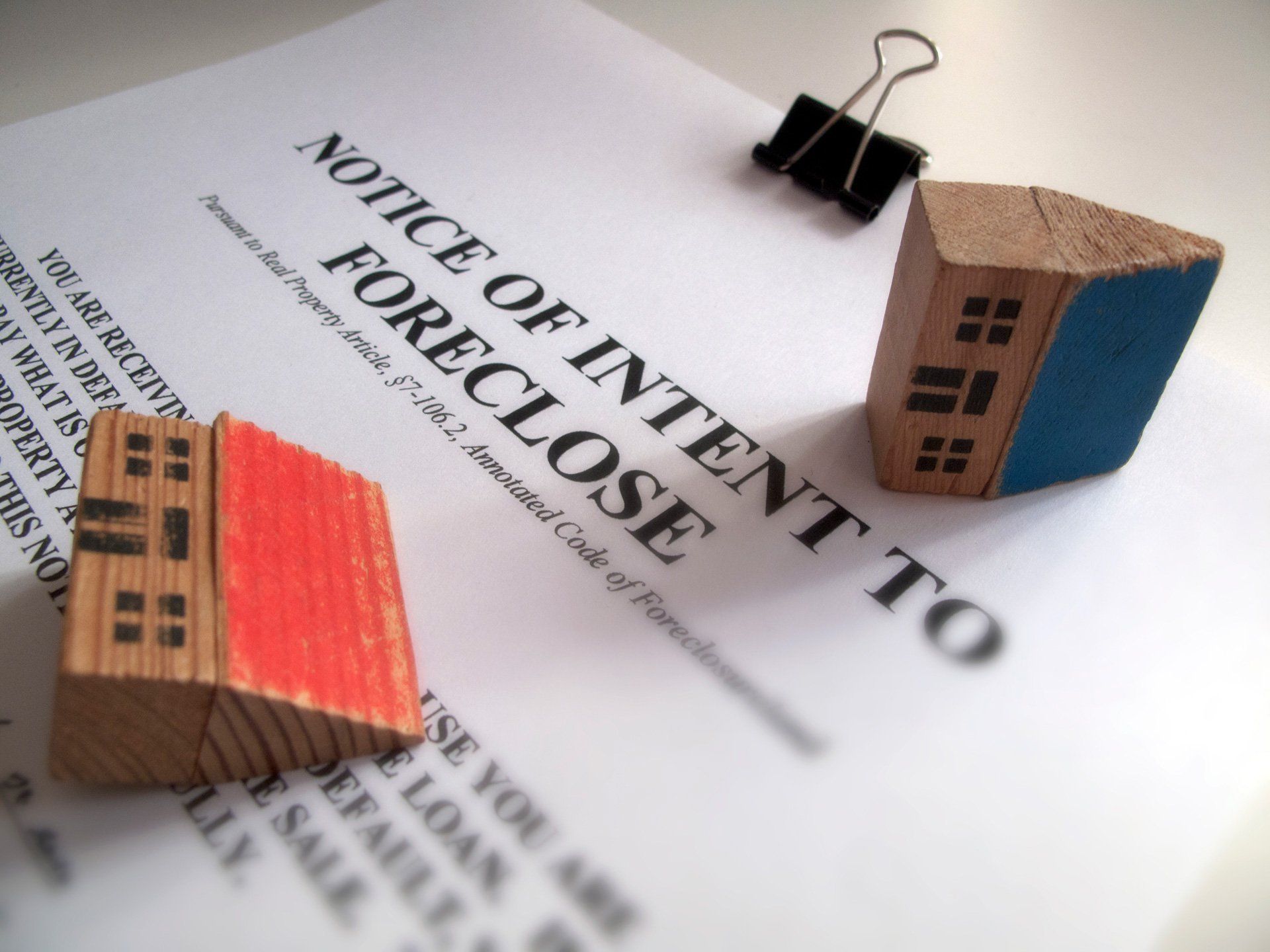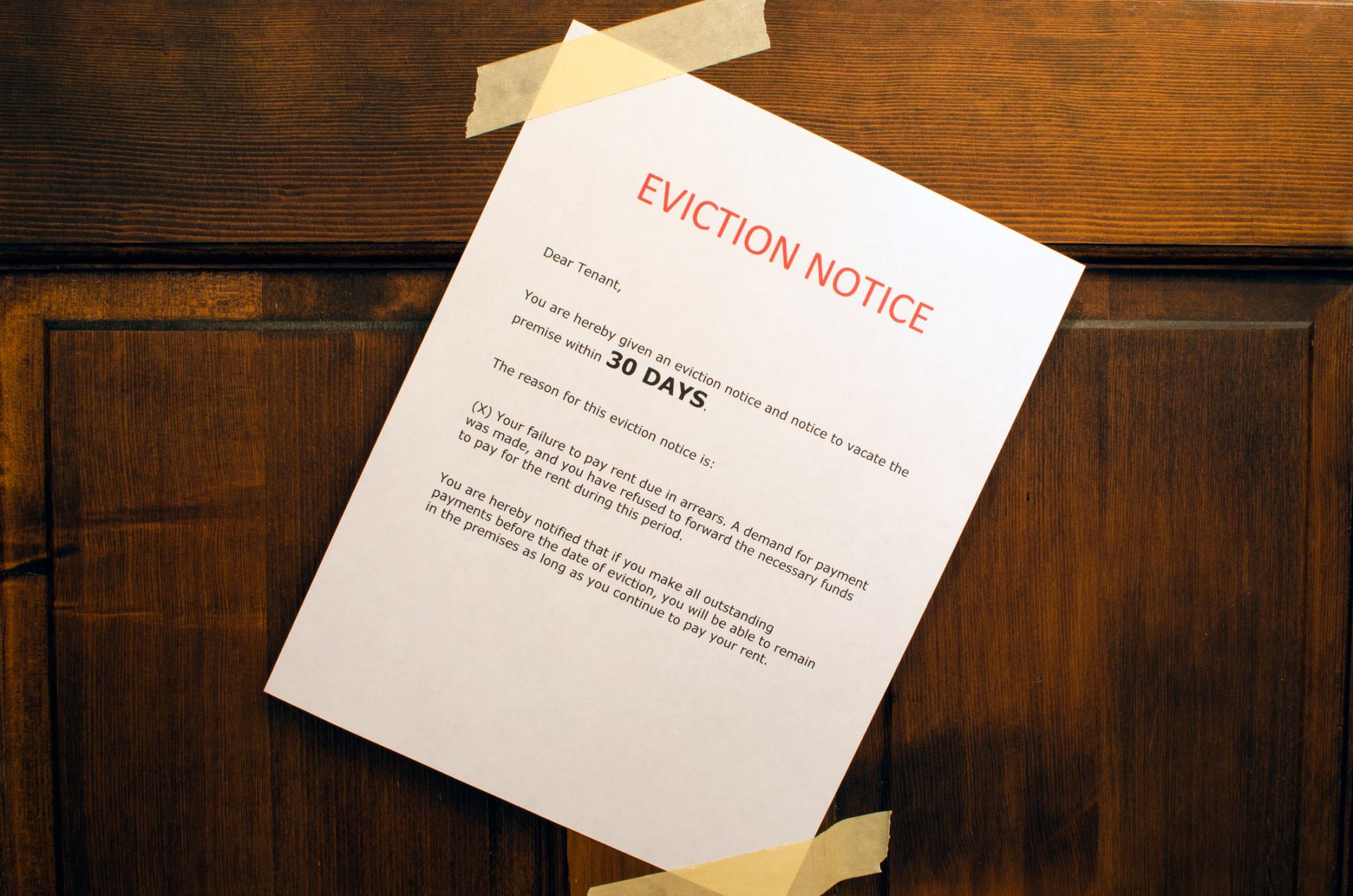03 Mar, 2017
This is a very long post describing some recent case law with respect to home equity litigation in Texas. These events are significant to a consumer bankruptcy practice, but if the subject is of no interest, you may want to skip it. The Texas Supreme Court issued two opinions on May 20, 2016 regarding issues related to the home equity loan forfeiture provisions of the Texas Constitution. These opinions make significant changes to Texas case law regarding applicability and enforcement of those provisions. The first case was Garofolo v. Ocwen Loan Servicing, L.L.C., 497 S.W.3d 474 (Tex.2016) and the second is Wood v. HSBC Bank USA, N.A., 2016 WL 2993923 (Tex.2016). It is important that the cases are read in sequential order as Wood relies on Garofolo in reaching its conclusion. (All references to the Texas Constitution herein are to Article XVI, section 50(a)(6) and its subsections unless otherwise noted.) I found these cases to be confusing (as did my sister who edits my posts) so I write to provide my understanding/interpretation of what they mean. To help you understand where we are going let me summarize at the beginning. Garofolo holds that there is no constitutional violation if a lender violates 50(a)(6) by not curing a violation if none of the cures enumerated in 50(a)(6)(Q)(x) will actually cure the violation. The court goes on to state (in dicta) that a borrower may have a breach of contract claim if the lender fails to cure after notice from the borrower and suffered actual damages. More significantly, Wood holds that if an equity lien does not include all of the terms and conditions required by 50(a)(6), it is not a valid lien under 50(c), and since it is not a valid lien, limitations does not start to run until the lender fails to cure after notice. (The statute of limitations ruling is the big news out of these two cases.) Wood also confirms Garofolo’s statements that a borrower may assert a claim for forfeiture as a breach of contract claim if the claim is asserted under 50(c) as opposed to 50(a). In Garofolo, the Fifth Circuit certified two questions to the Texas Supreme Court because they involved interpretation of the Texas Constitution. Those two questions were: 1. Does a lender or holder violate Article XVI, Section 50(a)(6)(Q)(vii) of the Texas Constitution, becoming liable for forfeiture of principal and interest, when the loan agreement incorporates the protections of Section 50(a)(6)(Q)(vii), but the lender or holder fails to return the cancelled note and release of lien upon full payment of the note within 60 days after the borrower informs the lender or holder of the failure to comply? 2. If the answer to Question 1 is “no,” then, in the absence of actual damages, does a lender or holder become liable for forfeiture of principal and interest under a breach of contract theory when the loan agreement incorporates the protections of Section 50(a)(6)(Q)(vii), but the lender or holder, although filing a release of lien in the deed records, fails to return the cancelled note and release upon full payment of the note within 60 days after the borrower informs the lender or holder of the failure to comply? 50(a)(6)(Q)(vii) states that a home equity loan is made on the condition that: (vii) within a reasonable time after termination and full payment of the extension of credit, the lender cancel and return the promissory note to the owner of the homestead and give the owner, in recordable form, a release of the lien securing the extension of credit or a copy of an endorsement and assignment of the lien to a lender that is refinancing the extension of credit; To avoid the suspense, the Court answered both questions “no.” Garofolo starts with one atypical fact – the equity loan in question had been paid in full and the lender filed a release of lien in the real property records before litigation ensued. Ocwen, however, failed to send the borrower the cancelled promissory note and a release in recordable form within a reasonable time after full payment of the loan as required by 50(a)(6)(Q)(vii) and by the deed of trust and the lender failed to cure within 60 day after notice from the borrower as provided in 50(a)(6)(Q)(x). The Garofolo Court held that a breach of the terms of the extension of credit under the terms of the loan documents – in this case, failure to timely return the note and send a release after demand – did not give rise to a constitutional claim for forfeiture. “Our constitution lays out the terms and conditions a home-equity loan must include if the lender wishes to foreclose on a homestead following borrower default.” In other words, an equity lending violation is a shield not a sword, although how the sword is wielded is not made completely clear by Garofolo (or Wood). The court states that “we do not suggest Garofolo is not without recourse. Her remedy simply lies elsewhere – for instance, in a traditional breach-of-contract claim, in which a borrower seeks specific performance or other remedies contingent on a showing of actual harm.” [Emphasis added.] With respect to the breach of contract claim, however, the Court held that she did not have a claim for forfeiture under a breach of contract theory as it was undisputed that she had suffered no actual damages as a result of the breach. (Although the holder did not send her a release in recordable form, the holder did file an actual release in the real property records so there was no cloud on her title.) The court noted that the 2003 amendments to 50(a)(6) included a change to the forfeiture provision “whereas forfeiture under the original version was arguably triggered whenever a lender ‘fails to comply with [its]obligations,’ the current version does not implicate forfeiture until a lender ‘fails to correct the failure to comply… by’ performance of a corrective measure.” 50(a)(6)(Q)(x) was amended in 2003 to set out the methods by which a lender or holder may correct the failure to comply. The amended statute provides: Except as provided by Subparagraph (xi) of this paragraph, the lender or any holder of the note for the extension of credit shall forfeit all principal and interest of the extension of credit if the lender or holder fails to comply with the lender’s or holder’s obligations under the extension of credit and fails to correct the failure to comply not later than the 60th day after the date the lender or holder is notified by the borrower of the lender’s failure to comply by: (a) paying the owner an amount equal to any overcharge paid by the owner under or related to the extension of credit if the owner has paid an amount that exceeds an amount stated in the applicable Paragraph (E), (G), or (O) of this subdivision; [Paragraph (E) is the 3% cap on closing costs which is one of the more common violations. Paragraph (G) is the prohibition against pre-payment penalties. Paragraph (O) limits the interest rate to a “rate permitted by statute.”] (b) sending the owner a written acknowledgement that the lien is valid only in the amount that the extension of credit does not exceed the percentage described by Paragraph (B) of this subdivision, if applicable, or is not secured by property described under Paragraph (H) or (I) of this subdivision, if applicable; [Paragraph (B) is the 80% loan-to-value limitation. Paragraph (H) prohibits taking “any additional real or personal property other than the homestead” as collateral for the loan. Paragraph (I) prohibits taking an equity lien on ag exempt property.] (c) sending the owner a written notice modifying any other amount, percentage, term, or other provision prohibited by this section to a permitted amount, percentage, term, or other provision and adjusting the account of the borrower to ensure that the borrower is not required to pay more than an amount permitted by this section and is not subject to any other term or provision prohibited by this section; [This cure does not refer to any specific provision or prohibition.] (d) delivering the required documents to the borrower if the lender fails to comply with Subparagraph (v) of this paragraph or obtaining the appropriate signatures if the lender fails to comply with Subparagraph (ix) of this paragraph; [Subparagraph (v) is the provision that requires the lender to provide the borrower with copies of all documents signed by the borrower related to the extension of credit which were signed at closing. Subparagraph (ix) is the provision which requires the acknowledgment of value to be signed by the borrower and the lender.] (e) sending the owner a written acknowledgement, if the failure to comply is prohibited by Paragraph (K) of this subdivision, that the accrual of interest and all of the owner’s obligations under the extension of credit are abated while any prior lien prohibited under Paragraph (K) remains secured by the homestead; or [This one presents a problem. Paragraph (K) provides that a borrower may only have one equity loan at a time. The cure provision is that the lender must send the borrower a written acknowledgement that accrual of interest and all of the borrower’s obligations under the extension of credit (including making payments) are abated while any prior lien prohibited under Paragraph (K) remains secured by the homestead. But, assuming that the first lien equity loan is otherwise valid, then the first lien is not prohibited by Paragraph (K). The cure provision as drafted would seem to provide only a cure for a third lien equity loan. In short, the cure does not appear to match the violation.] (f) if the failure to comply cannot be cured under Subparagraphs (x)(a)-(e) of this paragraph, curing the failure to comply by a refund or credit to the owner of $1,000 and offering the owner the right to refinance the extension of credit with the lender or holder for the remaining term of the loan at no cost to the owner on the same terms, including interest, as the original extension of credit with any modifications necessary to comply with this section or on terms on which the owner and the lender or holder otherwise agree that comply with this section. In this case, the violation – failing to return the cancelled note and sending a release in recordable form – does not fall within the scope of subparagraphs (a) through (e) so it must fall, if anywhere, within the scope of the “catchall” provisions of subparagraph (f). The Court held, however, that under the circumstances the catchall cure would not actually provide a cure. The lender could offer to pay or credit $1,000 but could not refinance the extension of credit as there was no longer any debt to refinance. Garofolo concluded “…if a lender fails to meet its obligations under the loan, forfeiture is an available remedy only if one of the six corrective measures can actually correct the underlying problem and the lender nonetheless fails to timely perform the relevant corrective measure.” [Emphasis added.] The final paragraph of the opinion states: The terms and conditions required to be included in a foreclosure-eligible home-equity loan are not substantive constitutional rights, nor does a constitutional forfeiture remedy exist to enforce them. The constitution guarantees freedom from forced sale of a homestead to satisfy the debt on a home-equity loan that does not include the required terms and provision – nothing more. Ocwen therefore did not violate the constitution through its post-origination failure to deliver a release of lien to Garofolo. A borrower may seek forfeiture through a breach-of-contract claim when the constitutional forfeiture provision is incorporated into the terms of a home-equity loan, but forfeiture is available only if one of the six specific constitutional corrective measures would actually correct the lender’s failure to comply with its obligations under the terms of the loan, and the lender nonetheless fails to perform the corrective measure following proper notice from the borrower. If performance of none of the corrective measures would actually correct the underlying deficiency, forfeiture is unavailable to remedy a lender’s failure to comply with the loan obligation at issue. Accordingly, we answer “no” to both certified questions. [Emphasis added.] [Unfortunately, Garofolo does not make clear the distinction between 50(a) and 50(c). More on this infra.] My response to the Court’s summary: First sentence: The terms and conditions applicable to home equity loans contained in 50(a)(6) are not “required” to be “included” in the equity loan documents (although most of them typically are included). Second sentence: A borrower is protected from forced sale of a homestead if the loan “does not include the required terms and conditions – nothing more.”” The opinion suggests that defects in an equity loan are only a defense to foreclosure and not the basis for an affirmative claim against the lender, but… (Look at the fourth sentence). Fourth sentence: Notwithstanding the holding that there is no constitutional violation or remedy, the court also stated that a borrower may seek forfeiture under a breach of contract theory but: • only if one of the corrective measures contained in 50(a)(6)(Q)(x)(a)-(f) would actually cure the violation; • and the lender fails to perform the applicable corrective action following notice from the borrower; • and the borrower sustained actual damages as a result of the uncured violation. Fifth sentence: If none of the corrective measures enumerated in the 50(a)(6)(Q)(x)(a)-(f) would actually correct the violation, forfeiture is not an available remedy. The missing sentence: The Court states elsewhere that the borrower must be able to prove actual damages in order to invoke forfeiture under a breach of contract theory. Under the facts of the case, the borrower in Garofolo sustained no actual damages and has no remedy. Because of the atypical fact in this case that the loan was paid in full prior to the instigation of litigation, the holding should be limited in its application. (Although I am primarily a debtor’s attorney, I have to agree with the result in Garofolo. The violation was highly technical and the borrower suffered no damages, actual or otherwise. A borrower shouldn’t get a “free house” under those circumstances.) Wood is the follow up to Garofolo. Wood states: The primary issue in this case is whether a statute of limitations applies to an action to quiet title where a lien securing a home-equity loan does not comply with constitutional parameters. The parties also dispute whether petitioners are entitled to a declaration that respondents have forfeited all principal and interest on the underlying loan. We conclude that liens securing constitutionally noncompliant home-equity loans are invalid until cured and thus not subject to any statute of limitations. We further hold that in light of this Court’s decision today in Garofolo [citation omitted], petitioners have not brought a cognizable claim for forfeiture. [Emphasis added.] The determination that there is no applicable statute of limitations is a major change from prior case law which generally held that limitations accrues at closing if the violation was apparent at the time of closing. See, In re Priester, 708 F.3d 667 (5th Cir.2013); Schanzle v. JPMC Specialty Mortgage LLC, 2011 WL 832170 (Tex.App – Austin 2011); Santiago v. Novastar Mortgage, Inc., 443 S.W.3d 462 (Tex.App. – Dallas 2014); Estate of Hardesty, 449 S.W.3d 895 (Tex.App. – Texarkana 2014). [Judge Gargotta took an early lead on the limitations issue in In re Ortegon, 398 B.R. 431 (Bankr.W.D.Tex.2008), a case I lost. Somebody has to try the cases where we don’t know what the answer is.] The borrower did not have to be aware that the extension of credit violated 50(a)(6), as long as it was not concealed. For instance, if the closing costs exceeded the 3% cap on closing costs and that could be determined by doing the math on the HUD-1, the fact that the borrower was not aware of the 3% cap or how it was calculated does not delay limitations from running. Wood explains the holding in Garofolo, including the scope of that opinion. Our opinion today in Garofolo clarifies the extent of the protections outlined in section 50(a), including a borrower’s access to the forfeiture remedy. Specifically, we hold in Garofolo that section 50(a) does not create substantive rights beyond a defense to foreclosure of a home-equity loan securing a constitutionally noncompliant loan, observing that the terms and conditions in section 50(a) “are not constitutional rights and obligations unto themselves.” We also clarify that “the forfeiture remedy [is not] a constitutional remedy unto itself. Rather it is just one of the terms and conditions a home-equity loan must include to be foreclosure-eligible. We explain that borrowers may access the forfeiture remedy through a breach-of-contract action based on the inclusion of those terms in their loan documents, as the Constitution requires to make the home-equity loan foreclosure-eligible. In Garofolo we interpret only section 50(a), which sets the terms home-equity loans must include to foreclosure-eligible. Section 50(c), on the other hand, expressly addresses the validity of any homestead lien, broadly declaring the lien invalid if the underlying loan does not comply with section 50. [Internal citations omitted.] [Emphasis added.] 50(a) provides, in relevant part: “The homestead of a family, or of a single adult person, shall be, and is hereby protected from forced sale, for the payment of all debts except: [a list which includes subparagraph (6) which describes home equity loans.] [Emphasis added.] 50(c) provides, in contrast: “No mortgage, trust deed, or other lien on the homestead shall ever be valid unless it secures a debt described by this section…” [Emphasis added.] Although Garofolo is less than crystal clear that its holding is based on 50(a) as opposed to 50(a)(6), Wood makes clear that the distinction is between 50(a) and 50(c). Although Garofolo and Wood may seem to say that a borrower may not bring a declaratory relief action regarding an alleged home equity defect, the actual holding is that a borrower may not bring a declaratory relief action based upon alleged constitutional violations. Both opinions make it clear that a borrower may bring an action for breach of contract if the loan is noncompliant and the lender/holder fails to cure after notice. This is significant as a claim for breach of contract gives rise to a request for attorney’s fees under Tex. Civ. Prac. & Rem. Code Sec. 38.001 and a claim for declaratory relief gives rise to a request for attorney’s fees under Tex. Civ. Prac. & Rem. Code Sec. 37.009. (I say “request” as both statutes are discretionary – the court “may” award attorney’s fees.) What it the message for practitioners? If a potential client comes to you and you identify a home equity violation, you should draft a notice of violation letter for the client’s signature which identifies the violation with sufficient specificity for the lender to identify the violation, i.e., if the violation is charging more than 3% for closing costs, say that. You do not have to identify the specific statutory sub-paragraph. Do not take any further action during the 60 day cure period. Assuming the lender does not cure, you have a couple of options. Have the borrower default, wait until the lender files an application for foreclosure, then sue the lender for declaratory relief and breach of contract. (And injunctive relief if necessary to stop a foreclosure.) Alternatively, don’t wait for the lender to take action and file a preemptive declaratory relief/breach of contract action. In your pleading, make certain that forfeiture of principal and interest is requested under 50(c), not 50(a). The declaratory relief is that the loan is invalid under 50(c). The breach of contract claim is that the lender failed to cure the violation pursuant to 50(a)(6)(Q)(x)(a)-(e) after notice pursuant to 50(a)(6)(Q)(x). This is way beyond the scope of this post, but home equity violations may give rise to other claims and causes of action. For instance, there may be claims for DTPA violations. Texas case law holds that a loan is not a “good’ or “service” and will not serve as the basis for a DTPA violation. If, however, the home equity violation is charging closing costs in excess of the 3% cap, one or more of those costs may be a good or service – an appraisal, a survey, a tax certificate……. – which might bring the claim under the DTPA. There may also be RESPA violations, FDCPA violations, FCRPA violation,… (I have seen all of these. This is not meant to be an exhaustive list.) I mention the DTPA in particular as it may give rise to treble damages. (And attorneys fees)










